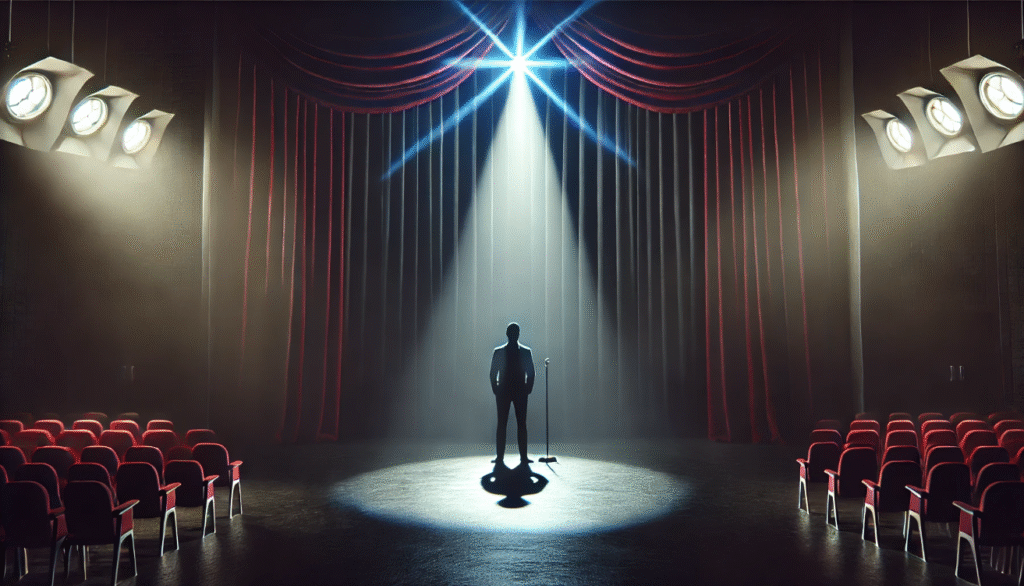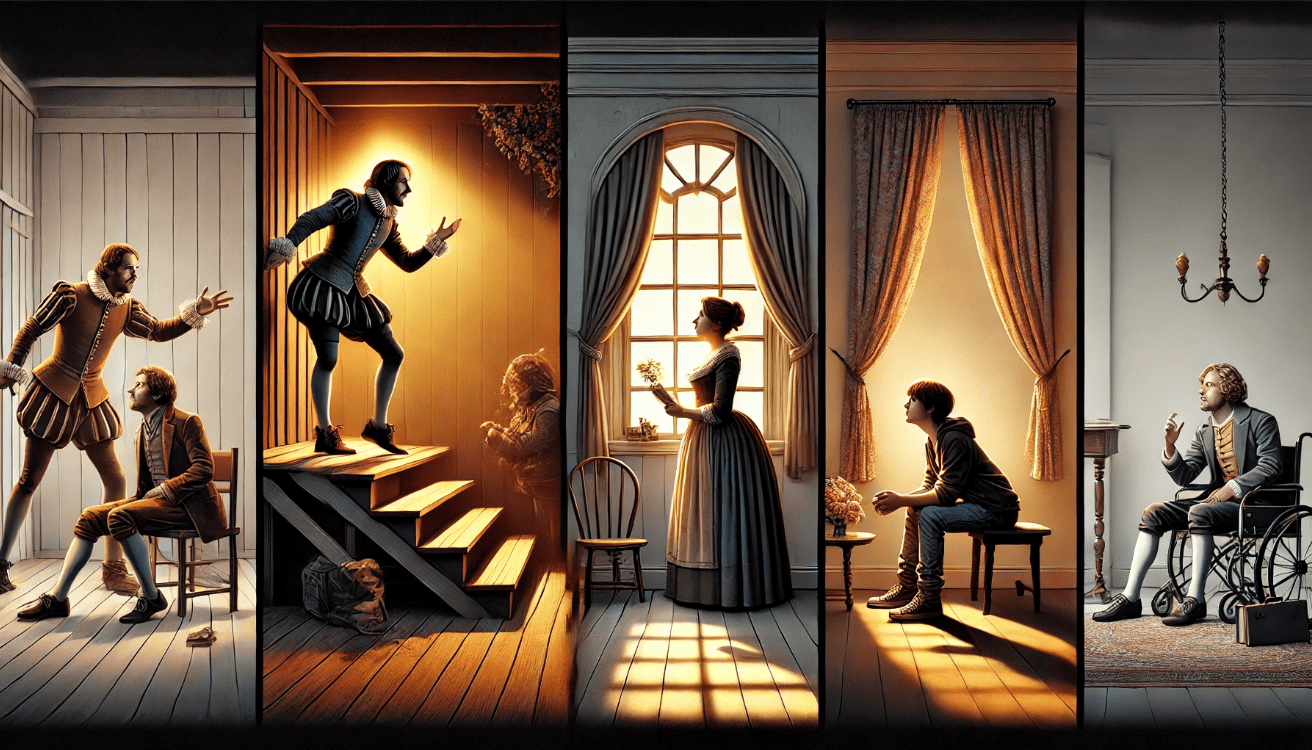
How Soliloquies Reveal Hidden Character Aspects in Literature: A Deep Dive into Dramatic Techniques
Ever wondered what a character really thinks behind their mask? 🎭 Soliloquies in literature unlock the hidden thoughts, fears, and desires of characters, offering a front-row seat to their inner worlds. For students, theater fans, or curious readers, understanding the use of soliloquies in revealing hidden character aspects solves the puzzle of complex motivations in plays like Hamlet or Macbeth. This article dives deep into how soliloquies work, why they matter, and how you can analyze them with ease. Get ready to discover practical tips that make literature come alive! 😊 Keep reading to unravel the magic of dramatic storytelling.
Table of Contents
ToggleWhat Are Soliloquies? A Simple Guide for Beginners

Ever read a play and wondered what a character is really thinking? 😊 A soliloquy is your answer! It’s a dramatic moment when a character speaks their thoughts aloud, alone on stage, sharing their deepest feelings with the audience. This powerful tool, central to the use of soliloquies in revealing hidden character aspects, lets you peek into a character’s mind—something dialogue with others can’t always show.
Unlike a monologue, which is a long speech to other characters, or an aside, a quick comment to the audience, a soliloquy is private and personal. Think of Hamlet’s “To be or not to be” speech—it reveals his inner turmoil about life and death. Soliloquies help you understand what drives characters, making them relatable and real.
Why Soliloquies Are Key to Understanding Characters
Struggling to figure out what makes a character tick? 😕 Soliloquies are your secret weapon! These solo speeches, central to the use of soliloquies in revealing hidden character aspects, let characters share their true thoughts and feelings when no one else is around. This glimpse into their minds helps you understand their actions and emotions like never before.
Why are soliloquies so powerful? They reveal what characters hide from others—think Hamlet’s “To be or not to be” speech, where he wrestles with life and death. This raw honesty shows his doubts and fears, explaining his indecision. Soliloquies bridge the gap between a character’s public face and private self, making them relatable.
For students or theater fans, soliloquies solve the problem of confusing character motives. They expose inner conflicts, like guilt or ambition, that drive the story. Pro Tip: When reading a play, mark soliloquies and note the emotions they reveal to understand the character’s true intentions. It’s like decoding their heart! ❤️
How Soliloquies Work: Techniques and Examples
Curious about how soliloquies bring characters to life? 🎭 These solo speeches are a cornerstone of the use of soliloquies in revealing hidden character aspects, using clever techniques to unpack a character’s inner world. Let’s explore how they work and see them in action with clear examples!

The Mechanics of a Soliloquy
Soliloquies use poetic language, like metaphors or rhetorical questions, to express raw emotions. They often hint at future events or deepen the plot. For example, a character might wrestle with a big decision, letting the audience in on their dilemma. This makes their choices more meaningful.
Key Examples
- Shakespeare’s Hamlet: In “To be or not to be,” Hamlet questions life and death, revealing his deep indecision. This soliloquy shows his philosophical struggle, making his hesitation relatable.
- Macbeth: “Is this a dagger which I see before me?” exposes Macbeth’s guilt and ambition as he debates murder. The vivid imagery pulls you into his conflicted mind.
- Modern Example: In Arthur Miller’s Death of a Salesman, Willy Loman’s introspections act like soliloquies, revealing his regrets and fading dreams, connecting classic techniques to modern drama.
Why It Matters
For students or theater fans, soliloquies clarify why characters act the way they do. They’re like a backstage pass to the story! 😊 Pro Tip: When reading, pause at a soliloquy and ask, “What’s this character hiding?” Jot down their emotions to track their journey.
The Psychological Power of Soliloquies

Why do soliloquies hit us so hard? 😢 They’re like a window into a character’s soul, revealing thoughts and feelings they keep hidden from the world. Central to the use of soliloquies in revealing hidden character aspects, this technique makes characters feel human, helping readers and students connect with their struggles.
Soliloquies expose raw emotions. In Shakespeare’s Othello, Iago’s soliloquies reveal his jealous scheming, showing a villain’s twisted mind. Similarly, Lady Macbeth’s “Out, damned spot!” speech uncovers her guilt, turning her from ruthless to broken. These moments let us see their vulnerabilities.
This psychological depth builds empathy. Even flawed characters become relatable when we hear their inner battles. For example, Hamlet’s doubts make us root for him, despite his flaws.
Soliloquies Across Time: From Classic to Modern Drama

Ever wondered if soliloquies still shine in today’s stories? 🎬 They’ve been revealing hidden character aspects for centuries and remain a vital tool in the use of soliloquies in revealing hidden character aspects. Let’s explore how soliloquies have evolved from classic plays to modern drama, helping readers and students connect with characters across time.
Elizabethan Era: Shakespeare’s Golden Age
In Shakespeare’s time, soliloquies were a stage staple. In Hamlet, “To be or not to be” lays bare Hamlet’s existential crisis, captivating audiences with his inner doubts. These speeches gave theatergoers a direct line to a character’s heart.
19th and 20th Century: New Twists
Playwrights like Henrik Ibsen adapted soliloquies. In A Doll’s House, Nora’s introspective moments feel like soliloquies, revealing her growing self-awareness. These quieter reflections suit modern, realistic dramas while still exposing hidden thoughts.
Modern Media: Soliloquies Today
Today’s films and TV use soliloquies as voiceovers or inner monologues. In Fleabag, the protagonist’s asides to the camera reveal her witty yet pained inner world, much like a soliloquy. Similarly, Fight Club uses narration to unpack the narrator’s chaotic mind.
How to Analyze Soliloquies Like a Pro

Feeling overwhelmed by soliloquies in plays? 😓 Don’t worry! Analyzing these solo speeches, a key part of the use of soliloquies in revealing hidden character aspects, is easier than it seems. This step-by-step guide will help students and literature fans unpack soliloquies with confidence, making essays and discussions a breeze.
Step-by-Step Guide to Analyzing Soliloquies
- Step 1: Check the Context
Where does the soliloquy happen in the story? Understand what’s going on—like in Macbeth, when Macbeth’s “Is this a dagger” speech comes before a murder, showing his inner conflict. - Step 2: Spot the Emotions
What’s the character feeling? Angry, guilty, or hopeful? In Romeo and Juliet, Juliet’s “Gallop apace” soliloquy bubbles with longing and excitement. - Step 3: Find Themes and Symbols
Look for big ideas or images, like life, death, or betrayal. Hamlet’s “To be or not to be” uses death imagery to explore existential questions. - Step 4: Connect to the Big Picture
How does the soliloquy shape the character’s journey or the play’s themes? Juliet’s speech foreshadows her impulsive choices.
Example Analysis
Take Hamlet’s “O, what a rogue and peasant slave am I” soliloquy. He’s frustrated, comparing himself to an actor who feels more passion. Context: He’s upset about his inaction. Emotions: Self-loathing and determination. Themes: Action vs. indecision. This drives his later resolve, tying to the play’s theme of revenge.
Common Pitfalls When Interpreting Soliloquies
Struggling to make sense of soliloquies? 😕 You’re not alone! These solo speeches, vital to the use of soliloquies in revealing hidden character aspects, can be tricky. Beginners often misinterpret them due to a few common mistakes. Let’s uncover these pitfalls and share practical fixes to help students and literature fans analyze soliloquies with confidence.
Mistake 1: Ignoring the Context
Soliloquies don’t exist in a vacuum. Missing the story’s events can lead to confusion. For example, Hamlet’s “To be or not to be” speech might seem just sad unless you know he’s grappling with revenge and mortality. Fix: Skim the scene before the soliloquy to grasp what’s driving the character.
Mistake 2: Overlooking Subtext
Soliloquies often hide deeper meanings in metaphors or tone. Assuming Lady Macbeth’s “Out, damned spot!” is just about cleaning misses her overwhelming guilt. Fix: Look for figurative language and ask, “What’s the character really saying?” Watching a performance can reveal emotional cues.
Mistake 3: Confusing Soliloquies with Monologues
Mixing up soliloquies (solo, private thoughts) with monologues (speeches to others) muddles analysis. Fix: Check if the character is alone—if so, it’s likely a soliloquy revealing their inner world.
Using Soliloquies in Education and Creative Writing
Want to make literature fun and engaging? 😊 Soliloquies, a key part of the use of soliloquies in revealing hidden character aspects, are perfect for classrooms and creative writing. They help students and writers dive into characters’ minds, boosting critical thinking and creativity. Here’s how to use them effectively!
In the Classroom: Spark Critical Thinking
Soliloquies are gold for teaching analysis. Discuss Hamlet’s “To be or not to be” to explore his doubts—students can debate his motivations in groups. This makes complex texts approachable. Tip: Assign a soliloquy and ask students to identify the character’s emotions and themes.
Creative Writing: Craft Your Own Soliloquy
Writing a soliloquy helps you practice revealing inner thoughts. Create one for a character from a book or your own story, focusing on their hidden fears or dreams. For example, write a soliloquy for a modern-day hero facing a tough choice. Tip: Use simple, emotional language to make it authentic.
Performance: Bring Soliloquies to Life
Performing soliloquies helps students feel the character’s emotions. Try acting out Macbeth’s “Is this a dagger” speech to grasp his guilt. Tip: Record a short performance to share in class or online for feedback.
Soliloquies are more than just dramatic speeches—they’re a window into the heart of a character! 😊 By mastering the use of soliloquies in revealing hidden character aspects, you unlock the secrets of literature’s most complex figures, from Hamlet’s doubts to Lady Macbeth’s guilt. Whether you’re a student, teacher, or literature lover, soliloquies make stories come alive with emotion and depth.
Ready to dive deeper? Pick a play like Macbeth or Fleabag and spot a soliloquy to analyze. Try writing your own to explore a character’s inner world! Share your favorite soliloquy in the comments or on social media. 📖 Let’s keep the conversation going!
Frequently Asked Questions (FAQs)
1. What is a soliloquy in literature?
A soliloquy is a dramatic speech delivered by a character alone on stage, revealing their inner thoughts and feelings. It gives the audience direct access to what the character is truly thinking, often beyond what they say to others.
2. How do soliloquies help reveal hidden aspects of a character?
Soliloquies expose a character’s private thoughts, fears, desires, and moral struggles. This insight helps readers or viewers understand the character on a deeper level, often revealing truths that aren’t shared with other characters.
3. Why are soliloquies important in plays like Shakespeare's?
In Shakespearean drama, soliloquies are key to character development and plot advancement. They let characters speak honestly, allowing the audience to see their motivations and inner conflicts, such as Hamlet’s doubts or Macbeth’s guilt.
4. Can soliloquies change how we view a character?
Yes, soliloquies often shift our perception of a character by revealing hidden motives or vulnerabilities. A villain may appear more human, or a hero more conflicted, making characters more complex and relatable.
5. What is the difference between a monologue and a soliloquy?
A monologue is a long speech by a character addressed to others or an audience, while a soliloquy is spoken alone, expressing personal thoughts. Soliloquies are more introspective and are used to reveal the character’s inner world.
6. How do writers use soliloquies as a dramatic technique?
Writers use soliloquies to slow down the action and explore a character’s mental state. This technique builds suspense, deepens emotional impact, and often foreshadows future events in the story.
7. Can soliloquies be used in modern literature or film?
Yes, modern writers and filmmakers use similar techniques like voice-overs or internal monologues to show a character’s private thoughts. These serve the same purpose as soliloquies in traditional drama.
8. How can analyzing soliloquies improve literary understanding?
Studying soliloquies helps readers uncover themes, character arcs, and hidden conflicts. It teaches critical thinking by encouraging deeper interpretation of what characters say versus what they actually mean or feel.
